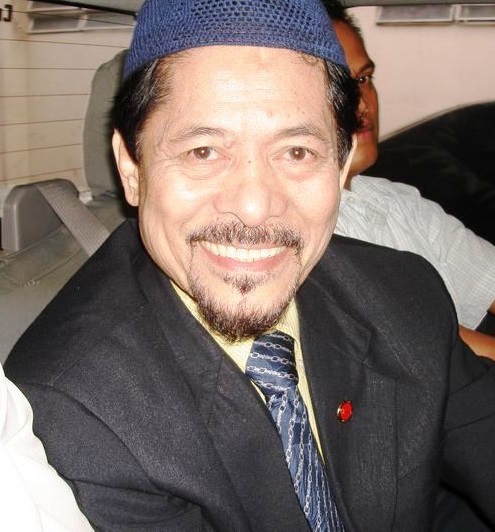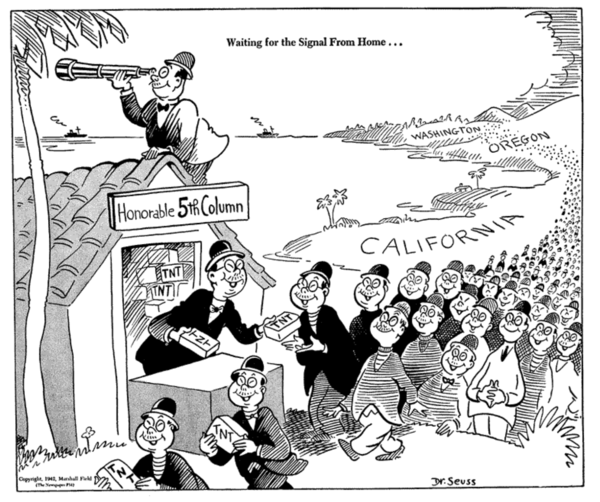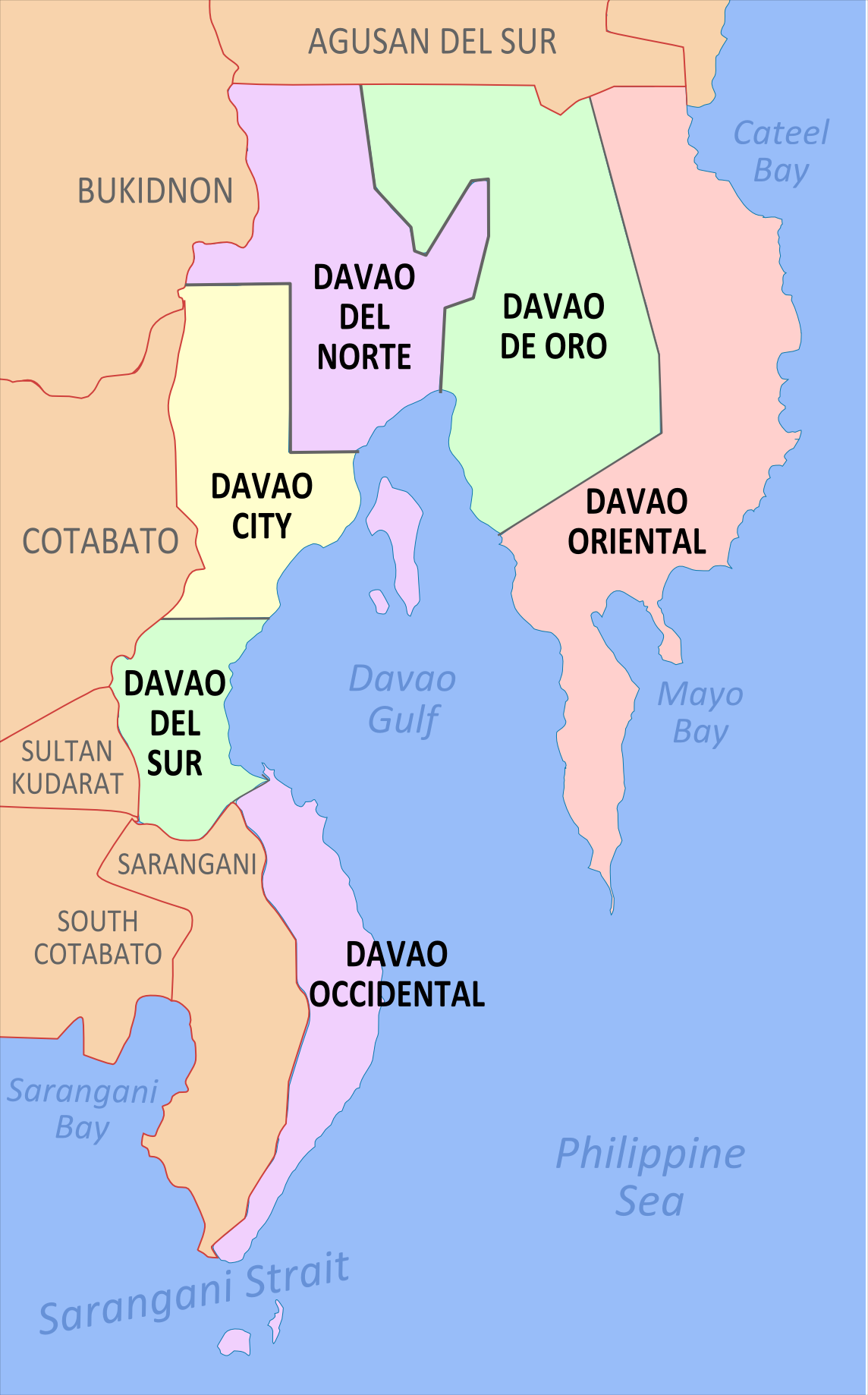|
Moros During World War II
The Moro Muslims of Mindanao and Sulu took up arms and fought hard against the Japanese invasion and helped defeat the Japanese occupation. Some of the Moros had been fighting the Americans just weeks before the Japanese invaded and proceeded to direct their fight against the new invaders as well. Sultan Jainal Abirin II of Sulu opposed the Japanese invasion. Description The Tausug Moros lived in the Sulu archipelago, traditionally ruled by the Sulu Sultanate, the Maguindanaon Moros lived on Mindanao, traditionally ruled by the Maguindanao Sultanate, and the Maranao Moros lived around Lake Lanao, traditionally ruled by the Confederation of sultanates in Lanao (Pat a Pangampong a Ranao). They were invaded by the Americans in the Moro Rebellion and annexed into the Philippines. Among the anti-Japanese resistance the Tausug leader was Sulu Sultan Jainal Abirin II, the Chinese-Maguindanaon leader Datu Gumbay Piang, and Maranao leaders were Datu Busran Kalaw, Salipada Pendatun, Su ... [...More Info...] [...Related Items...] OR: [Wikipedia] [Google] [Baidu] |
Moro People
The Moro people or Bangsamoro people are the 13 Muslim-majority ethnolinguistic Austronesian groups of Mindanao, Sulu, and Palawan, native to the region known as the Bangsamoro (lit. ''Moro nation'' or ''Moro country''). As Muslim-majority ethnic groups, they form the largest non-Christian population in the Philippines, and comprise about 5% of the country's total population, or 5 million people. Most Moros are followers of Sunni Islam of the Shafiʽi school of fiqh. The Moros were once independent under a variety of local states, including the Sultanate of Sulu, the Sultanate of Maguindanao, and the Confederation of sultanates in Lanao; withstanding repeated Spanish invasions, the Moro states remained de facto independent up until the Moro Rebellion of the early 20th century. Upon Philippine independence in 1946, the Moros continued their struggle for self-determination against a predominantly–Christian Philippines, culminating in a decades-long insurgency of armed rebe ... [...More Info...] [...Related Items...] OR: [Wikipedia] [Google] [Baidu] |
Salipada Pendatun
Datu Salipada Khalid Pendatun (December 3, 1912 – January 27, 1985) was a Filipino lawyer, military officer, and politician, being the first Filipino Muslim in history to hold these offices. Early life and education Better known as “Sali” to friends, he was born in Pikit, Cotabato, on 3 December 1912. He completed his elementary and high school education in Cotabato, obtained his Associate in arts degree in 1934 and Bachelor of Laws degree in 1938, both from the University of the Philippines, and passed the bar examination also in 1938. Contributions He fought against the Japanese. Pendatun was from Cotabato-Maguindanao. The group he formed was called the Bolo Battalion, which evolved into the larger group, Muslim-Christian Guerrilla Movement and later, the Cotabato-Bukidnon Force.Moslem-Christian Guerrillas of Mindanao By Uldarico Baclagon with foreword by then Defense Secretary Fidel Ramos During his time as a politician, especially when he was the governor of the ... [...More Info...] [...Related Items...] OR: [Wikipedia] [Google] [Baidu] |
Japanese Occupation Of British Borneo
Before the outbreak of World War II in the Pacific, the island of Borneo was divided into five territories. Four of the territories were in the north and under British control – Sarawak, Brunei, Labuan, an island, and British North Borneo; while the remainder, and bulk, of the island, was under the jurisdiction of the Dutch East Indies. On 16December 1941, Japanese forces landed at Miri, Sarawak having sailed from Cam Ranh Bay in French Indochina. On 1 January 1942, the Japanese navy landed unopposed in Labuan. The next day, 2 January 1942, the Japanese landed at Mempakul on North Borneo territory. After negotiations as to the surrender of Jesselton with the Officers-in-charge of Jesselton and waiting for troop reinforcements, Jesselton was occupied by the Japanese on 8 January. However, it took the Japanese until the end of the month to conquer the entire territory of British Borneo. The Japanese subsequently renamed the northern part as , Labuan as and the neighbouring Du ... [...More Info...] [...Related Items...] OR: [Wikipedia] [Google] [Baidu] |
Moro National Liberation Front
The Moro National Liberation Front (MNLF; ar, الجبهة الوطنية لتحرير مورو) is a political organization in the Philippines that was founded in 1972. It started as a splinter group of the Muslim Independence Movement. The MNLF was the leading organization among Moro separatists for about two decades beginning from the 1970s. In 1996, the MNLF signed a landmark peace agreement with the Philippine government that saw the creation of Autonomous Region in Muslim Mindanao (ARMM), an area composed of two mainland provinces and three island provinces in which the predominantly Muslim population enjoys a degree of self-rule. Nur Misuari was installed as the region's governor but his rule ended in violence when he led a failed rebellion against the Philippine government in November 2001, and fled to Sabah before being deported back to the Philippines by the Malaysian authorities. The MNLF is internationally recognized by the Organisation of Islamic Cooperation (OIC) ... [...More Info...] [...Related Items...] OR: [Wikipedia] [Google] [Baidu] |
Nur Misuari
Nur Misuari ( Tausug: ''Nūr Miswāri'', born Nurallaji Pinang Misuari; March 3, 1939) is a Moro Filipino revolutionary and politician, founder and leader of the Moro National Liberation Front. Early and Personal life Nur Misuari was born on March 3, 1939, in Tapul, Sulu, Philippines. The fourth of ten children, his parents were of Tausūg- Sama descent and came from Kabinga-an, Tapul Island. His father was Saliddain Misuari, who worked as a fisherman, and his mother was Dindanghail Pining. Nur Misuari is a direct descendant of Panglima Mahabasser Elidji, a Tausūg warrior and representative from the Sultanate of Sulu who he claims helped the Sultanate of Brunei forces under Sultan Muhyiddin during the civil war in northern Borneo, after which the eastern part of Sabah was rewarded to the Tausūgs by Sultan Muhyiddin. Misuari's father moved their family from Tapul to Jolo, Sulu when he was still young. He attended Jolo Central Elementary School from 1949 to 1955 and studied ... [...More Info...] [...Related Items...] OR: [Wikipedia] [Google] [Baidu] |
Battle Of Leyte
A battle is an occurrence of combat in warfare between opposing military units of any number or size. A war usually consists of multiple battles. In general, a battle is a military engagement that is well defined in duration, area, and force commitment. An engagement with only limited commitment between the forces and without decisive results is sometimes called a skirmish. The word "battle" can also be used infrequently to refer to an entire operational campaign, although this usage greatly diverges from its conventional or customary meaning. Generally, the word "battle" is used for such campaigns if referring to a protracted combat encounter in which either one or both of the combatants had the same methods, resources, and strategic objectives throughout the encounter. Some prominent examples of this would be the Battle of the Atlantic, Battle of Britain, and Battle of Stalingrad, all in World War II. Wars and military campaigns are guided by military strategy, wherea ... [...More Info...] [...Related Items...] OR: [Wikipedia] [Google] [Baidu] |
Fifth Column
A fifth column is any group of people who undermine a larger group or nation from within, usually in favor of an enemy group or another nation. According to Harris Mylonas and Scott Radnitz, "fifth columns" are “domestic actors who work to undermine the national interest, in cooperation with external rivals of the state." The activities of a fifth column can be overt or clandestine. Forces gathered in secret can mobilize openly to assist an external attack. This term is also extended to organised actions by military personnel. Clandestine fifth column activities can involve acts of sabotage, disinformation, espionage, and/or terrorism executed within defense lines by secret sympathizers with an external force. Origin The term "fifth column" originated in Spain (originally ''quinta columna'') during the early phase of the Spanish Civil War. It gained popularity in the Loyalist faction media in early October 1936 and immediately started to spread abroad. The exact origins of t ... [...More Info...] [...Related Items...] OR: [Wikipedia] [Google] [Baidu] |
Davao Region
Davao Region, formerly called Southern Mindanao ( ceb, Rehiyon sa Davao; fil, Rehiyon ng Davao), is an administrative region in the Philippines, designated as Region XI. It is situated at the southeastern portion of Mindanao and comprises five provinces: Davao de Oro, Davao del Norte, Davao del Sur, Davao Oriental and Davao Occidental. The region encloses the Davao Gulf, and its regional center is Davao City. ''Dávao'' is the Hispanicized pronunciation of ''daba-daba'', the Bagobo word for "fire". Etymology Many historians believe that the name ''Davao'' is the mixture of the three names that three different tribes, the earliest settlers in the region, had for the Davao River. The Manobos, an aboriginal tribe, referred to the Davao Rivers as ''Davohoho''. Another tribe, the Bagobos, referred to the river as ''Davohaha'', which means "fire", while another tribe, the Guiangan tribe, called the river as ''Duhwow''. History The history of the region dates back to the times ... [...More Info...] [...Related Items...] OR: [Wikipedia] [Google] [Baidu] |
Lanao Del Sur
Lanao del Sur ( tl, Timog Lanao; Maranao and ilp, Pagabagatan Ranao), officially the Province of Lanao del Sur, is a province in the Philippines located in the Bangsamoro Autonomous Region in Muslim Mindanao (BARMM). The capital is the city of Marawi, and it borders Lanao del Norte to the north, Bukidnon to the east, and Maguindanao del Norte and Cotabato to the south. To the southwest lies Illana Bay, an arm of the Moro Gulf. Situated in the interior of Lanao del Sur is Lanao Lake, the largest in Mindanao. Etymology "Lanao" means "lake", derived from ''ranao''. The province, situated at basin of Lake Lanao, is known as the land of the "Maranaos" (which means "the "people of the lake"). History Pre-Islamic Era Prior to the arrival of Islam, the region already had a sophisticated culture, as embodied in various Maranao epics, chants, and recorded history. The people of Lanao used to adhere to Hinduism, polytheist animism, and Buddhism. During this era, various cultural i ... [...More Info...] [...Related Items...] OR: [Wikipedia] [Google] [Baidu] |
Guy Fort
Guy O. Fort (January 1, 1879 – November 11, 1942) was a brigadier general in the Philippine Army under the control of the United States Army Forces in the Far East. Fort led the 81st Division (Philippines) during the initial Battle of the Philippines. Ordered by his higher command to surrender, Fort was taken prisoner by Japanese forces. His captors demanded Fort help persuade his former soldiers engaged in guerrilla warfare to stop resisting the occupation. Fort refused and was executed by firing squad. Fort is the only American-born general officer to be executed by enemy forces.''Fallen in Battle: American General Officer Combat Fatalities from 1775'' by Russell K. Brown, Greenwood Press, 1988, pages 40–41."Entry for Fort, Guy O." in ''Biographical Dictionary of World War II Generals and Flag Officers'' by R. Manning Ancell with Christine M. Miller, Greenwood Press, 1996. [...More Info...] [...Related Items...] OR: [Wikipedia] [Google] [Baidu] |
Wendell Fertig
Wendell Fertig (December 16, 1900 – March 24, 1975)Brooks 2003, p. 37. was an American civil engineer, in the American-administered Commonwealth of the Philippines, who organized and commanded an American-Filipino guerrilla force on the Japanese-occupied, southern Philippine island of Mindanao during World War II. Fertig's widely scattered guerrilla force numbered approximately 32,000. He faced about 50,000 Japanese soldiers, mostly garrison troops in towns and cities.Smith 2005, p 597, 647, 694. Fertig held a U.S. Army reserve commission and was called into military service before the war in the Pacific began. Ordered from Corregidor before its surrender to the Japanese, he was sent to Mindanao to assume command of engineer activities there. Almost as soon as he arrived, the U.S. Army forces on Mindanao surrendered, but Fertig refused to do so.Keats 1965, p. 10. Fertig used his knowledge of the Filipino people to organize them into a guerrilla army and civilian government. ... [...More Info...] [...Related Items...] OR: [Wikipedia] [Google] [Baidu] |
Lanao (province)
Lanao was a province of the Philippines from 1914 to 1959. Today, the province comprises Lanao del Norte and Lanao del Sur. History The term "Lanao" is derived from a Maranao word "Ranao" meaning a body of water. "Meranau" means lake dweller. They are the natives of the place occupying the land around Lake Lanao, which is situated at the central part of Lanao del Sur. Lanao, applies to the entire area before its division. When it was divided into two provinces, the southern portion became Lanao del Sur and the northern part became Lanao del Norte. Dansalan, Marawi City's old name, was explored by the Spaniards as early as 1639. It is said that at that time, Marawi was already the citadel of Malayan-Arabic culture in Mindanao. Feeling the pulse of strong refusal among its inhabitants to adopt Christianity, the Spaniards abandoned the project of colonizing the area. Dansalan, physically speaking, would have satisfactorily qualified to become a town or municipality during the ti ... [...More Info...] [...Related Items...] OR: [Wikipedia] [Google] [Baidu] |




